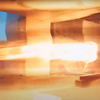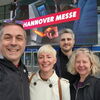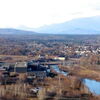Processing Your Payment
Please do not leave this page until complete. This can take a few moments.
- News
-
Editions
-
- Lists
-
Viewpoints
-
Our Events
-
Event Info
- Business Leaders of the Year Reception 2025
- Women's Leadership Forum 2025
- On the Road with Mainebiz in Bethel
- Health Care Forum 2025
- On The Road with Mainebiz in Greenville
- On The Road with Mainebiz in Waterville
- Small Business Forum 2025
- Outstanding Women in Business Reception 2025
- On The Road with Mainebiz in Bath
- 60 Ideas in 60 Minutes Portland 2025
- 40 Under 40 Awards Reception 2025
- On The Road with Mainebiz in Lewiston / Auburn
- 60 Ideas in 60 Minutes Bangor 2025
Award Honorees
- 2025 Business Leaders of the Year
- 2024 Women to Watch Honorees
- 2024 Business Leaders of the Year
- 2023 NextUp: 40 Under 40 Honorees
- 2023 Women to Watch Honorees
- 2023 Business Leaders of the Year
- 2022 NextUp: 40 Under 40 Honorees
- 2022 Women to Watch Honorees
- 2022 Business Leaders of the Year
-
-
Calendar
-
Biz Marketplace
- News
- Editions
- Lists
- Viewpoints
-
Our Events
Event Info
- View all Events
- Business Leaders of the Year Reception 2025
- Women's Leadership Forum 2025
- On the Road with Mainebiz in Bethel
- Health Care Forum 2025
- On The Road with Mainebiz in Greenville
- + More
- On The Road with Mainebiz in Waterville
- Small Business Forum 2025
- Outstanding Women in Business Reception 2025
- On The Road with Mainebiz in Bath
- 60 Ideas in 60 Minutes Portland 2025
- 40 Under 40 Awards Reception 2025
- On The Road with Mainebiz in Lewiston / Auburn
- 60 Ideas in 60 Minutes Bangor 2025
- - Less
Award Honorees
- 2025 Business Leaders of the Year
- 2024 Women to Watch Honorees
- 2024 Business Leaders of the Year
- 2023 NextUp: 40 Under 40 Honorees
- 2023 Women to Watch Honorees
- 2023 Business Leaders of the Year
- + More
- 2022 NextUp: 40 Under 40 Honorees
- 2022 Women to Watch Honorees
- 2022 Business Leaders of the Year
- Nomination Forms
- Calendar
- Biz Marketplace
Mineral spirits | Glittery discoveries and a surge in mining spark new business along Maine's gem belt
 Photo/Michelle Hammarstrom
Rock hound: Zoltan Matolcsy, owner of Western Maine Mineral Adventures in Woodstock, says the gem business has exploded recently
Photo/Michelle Hammarstrom
Rock hound: Zoltan Matolcsy, owner of Western Maine Mineral Adventures in Woodstock, says the gem business has exploded recently
 Photo/David A. Rodgers
Dennis Creaser, jeweler, gemologist and owner of Creaser Jewelers in South Paris, grades local gemstones
Photo/David A. Rodgers
Dennis Creaser, jeweler, gemologist and owner of Creaser Jewelers in South Paris, grades local gemstones
 Photo/David A. Rodgers
Gemstones from western Maine
Photo/David A. Rodgers
Gemstones from western Maine
On an open stretch of Route 26 in Woodstock, somewhere between Paris and Bethel, a white sign catches drivers’ attention with big red letters: “DIG GEMS.” Beneath it in black reads, “Maine tourmaline,” with an arrow directing people to an unassuming dirt parking lot. Beyond the lot is a white canopy, where people pay anywhere from $10 to $100 or more to sift through buckets of dirt and rocks dug from nearby Mount Mica. They rinse the minerals in water cascading from an old-fashioned wooden sluice. Visitors usually leave with pieces of green or pink tourmaline, quartz and garnet.
Zoltan Matolcsy and his wife, Jody, have been running this operation, called Western Maine Mineral Adventures, for three years. Besides the sluice operation that’s open seven days a week, the Matolcsys offer guided tours of area mines, including a weekly trip to Mount Mica.
Gem mining in western Maine has been a draw for the region since the gem industry first discovered tourmaline at Mount Mica in Paris in 1820. Interest in the hobby has waxed and waned over the years, usually in tandem with the latest major mineral discovery, but lately the industry has seen a surge. Each year, “hundreds of people” go on the guided tours, and “thousands” stop by the sluice on Route 26, says Matolcsy. “The business has the potential of [bringing in] $1,000 a day at the height of the season,” he says.
He’s also seen a rise in others looking to get into the business. When he started, he was one of only two people offering sluicing operations; now, he has at least six competitors, he says, five of whom started up this year.
Major mineral discoveries — like a large tourmaline pocket unearthed in 1973 and a morganite pocket uncovered in Buckfield in 1989 — have sparked visitors to Maine’s gem mines. This time around, those in the industry say the down economy is the likely trigger. While fewer people are shelling out for expensive gem jewelry, “there are lots more people looking for [gems],” says Dennis Creaser, owner of Creaser Jewelers in South Paris, which specializes in designing Maine gem jewelry. “It’s kind of like playing the lottery when you don’t have the money for it. People believe they’re going to strike it rich, and it’s not expensive to look for them.”
Mining economic opportunities
Maine is home to about 42 gem-mining sites, with the majority located in a belt that stretches through Franklin, Oxford, Androscoggin and Sagadahoc counties. Mount Mica became the country’s first gem mine, producing hundreds of kilograms of tourmaline, and today Maine remains only one of two states in the country where tourmaline is actively mined (California is the other).
Though western Maine’s gem heritage has long garnered international attention among geologists and mineralogists, more amateur rock hounds have been trekking to the region in the last few years, in part spurred by the resurgence of mining activity in 2003 at Mount Mica, which sat dormant for about a decade until Florida technology exec Gary Freeman bought it in 2002. A guidebook to the state’s mine locations, most recently published in hard copy and online in 2005 by the Maine Geological Survey, has also spread the word. The increased popularity, however, has had a negative result: Many mine owners have closed their pits to the public for liability, safety or trespassing concerns. About 25 mines once listed in the state’s guidebook have been closed as of this year, according to the MGS.
As more mines close to the general public, business has increased at operations that offer guided tours. Mary Groves has run Poland Mining Camps, first started by her late husband in the 1960s, for nearly 20 years. Guests stay at one of six cabins, spend their days gem mining at one of 15 locations, and return to the camp for a home-cooked meal. Business has been so busy last year and this year that the cabins’ 20 beds are full seven days a week for 18 weeks, save one or two days. Visitors instead book rooms at local motels. “Lots more people are doing it now than when I first started with my husband,” Groves says. She attributes the boom to a renewed interest in “getting back to nature,” and a new crop of amateur geologists. “People who collected as kids are now retired and have time on their hands,” she says.
Seabury Lyon is a partner at Maine Mineralogy Expeditions in Bethel, a program that started four years ago in partnership with Bethel Outdoor Adventure and Mt. Mann Jewelers in Bethel. Lyon holds educational lectures on mineralogy and takes people on tours of the Bumpus mine in Albany, owned by Larry Stifler and Mary McFadden. The program sees between 350 and 700 visitors a summer, and is projecting a busy season this year, despite the economy and gloomy weather. “I don’t know whether to attribute it to our advertising or promotions, but we have noticed a tremendous growth in interest and people visiting,” he says.
The popularity of gem hunting prompted Lyon and the other partners to launch a sluicing operation similar to Western Maine Mineral Adventures, where visitors can sift through material from Mount Mica. Started halfway through last year, the sluice “showed enough promise” that Maine Minerology Expeditions brought in a bigger tent and built more tables for this year, says Lyon. “We heard others in the state were doing well, and Mount Mica is close for material. It’s a highly productive resource and a good opportunity.”
On the gem trail
This year also marks the first season of a series of gem-hunting field trips organized by the Maine Geological Survey and the Maine Mineral Symposium Association. In 2002, the two organizations held a fund-raising initiative to buy five mines in the Newry area and turn them into a public mineral collecting park, but only managed to raise $25,000 out of the $300,000 needed. The money will instead fund mineral collecting trips each summer until it runs out.
This year’s three trips filled up so fast — one trip filled just five minutes after registration opened — the MGS and MMSA are planning to double the number of trips they hold next summer, according to Woodrow Thompson, a physical geologist with the Maine Geological Survey.
Thompson doesn’t have numbers on how many tourists come to the area to gem hunt, but says the number is “huge.” Renowned gem store Perham’s in Paris (which recently closed after 95 years in business) brought in 50,000 people or more a year, according to Thompson, activity that brings business to area motels, restaurants and other attractions. “The impact is almost impossible to measure; it’s certainly been significant,” he says.
Zoltan Matolcsy of Western Maine Mineral Adventures has plans to expand his business next year by offering three- and five-day mineral hunting excursions in partnership with neighboring Mollyocket Inn. “This is what I envisioned years ago — establishing a new economic base for the area,” he says.
Mindy Favreau, Mainebiz staff reporter, can be reached at mfavreau@mainebiz.biz.










Comments